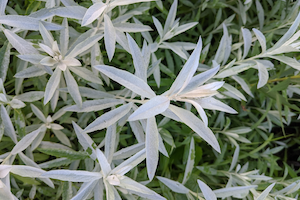Photo Credit: © alankoskelin via iNaturalist.org. Creative Commons Attribution-NonCommercial 4.0 International (CC BY-NC 4.0) License; https://creativecommons.org/licenses/by-nc/4.0/.
Artemisia ludoviciana
Common Name: white sagebrush
Other Common Names: cudweed sagewort, gray sagewort, Louisiana sagewort, Louisiana wormwood, mugwort wormwood, prairie sage
Plant Functional Group: Forb
Class > Order > Family: Magnoliopsida > Asterales > Asteraceae
